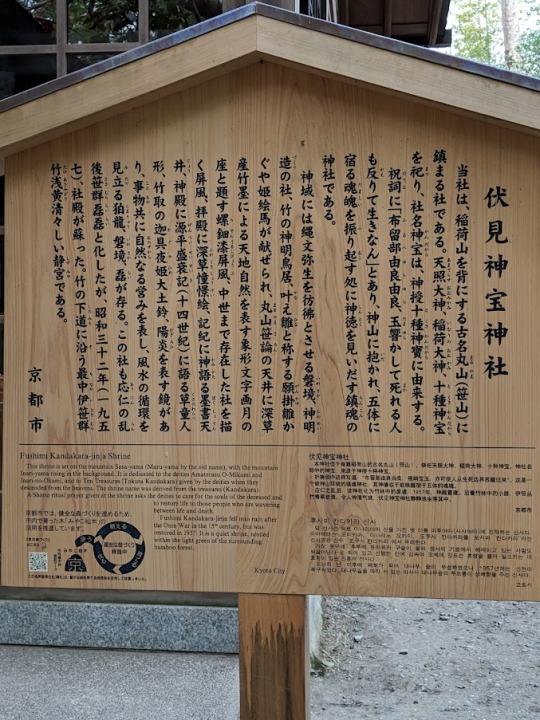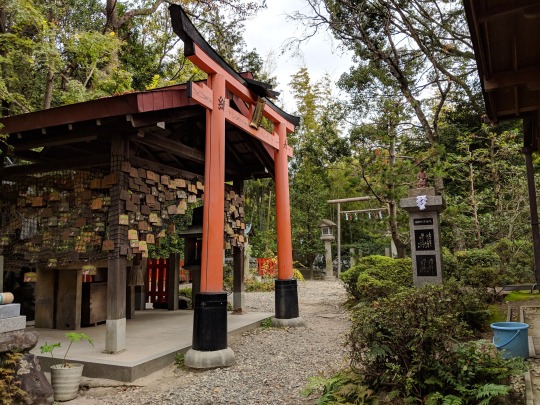#Tokusa Yama
Explore tagged Tumblr posts
Text
Kyoto Gion Festival
Kyoto’s famed Gion Festival features dazzling portable shrines and crane dances at Yasaka Shrine, geisha sightings, amazing street food and outstanding people watching.
But its best-known symbols are the 33 floats that are painstakingly constructed, decorated and taken down again each year between July 10 and 24. They vary in shape and size, but the largest weighs in at a whopping 12 tons, their spires reaching up seven stories in the air.

Kyoto’s torrential rains and steamy heat in July make the best of us feel miserable. Before modern science and sanitation, it made people desperately ill. And back in the 9th century, plagues and such were punishment from unhappy spirits. So the Heian emperor ordered a ritual to appease them.
Continue Reading
#ato matsuri#gion matsuri history#Kyoto Gion Matsuri#most famous festival in japan#yoiyama festival#Ashikari Yama#Fune Boko#Iwato Yama#Kikusui Boko#Tokusa Yama#Tsuki Boko
0 notes
Photo

Tokusa Yama (木賊山) during yoiyoiyoiyama (宵々々山) Gion Matsuri (祇園祭り) in Kyoto City.
17 notes
·
View notes
Photo


Note: Asterisks represent characters that I couldn't read or figure out. If someone is able to figure them out, please let me know so that I can amend my post. :3
伏見神宝神社 当社は、稲荷山を背にする古名丸山(まるやま)(笹山)に鎮まる社である。天照大神、稲荷大神、十種神宝を祀り、社名神宝は、神授十種神寶に由来する。祝詞に「布留部由良由良、玉響(ふるべゆらゆらたまゆら)かして死れる(まかれる)人も反りて生きなん」とあり、神山に抱かれ、五体に宿る魂魄(たましい)を振り起こす処に神徳を見いだす鎮魂の神社である。 神域には縄文弥生を彷彿とさせる磐境、神明造の社、竹の神明鳥居、叶え雛と称する願掛*かくや姫絵馬が献ざられ、丸山笹論(まるやまさろん)の天井に深草産竹墨による天地自然を表す象形文字画月の座と��する螺鈿漆屏風、中世まで存在した社を描く屏風、拝殿に深草憧憬(ふくくさしょうけい)絵、記紀に神語る(かまかたる)墨書天井、神殿に源平盛衰記(十四世紀)に語る草童(くさのわらべ)人形、竹取の迦具夜姫(かぐやひめ)大土鈴、陽炎(かぎろひ)を表す鏡があり、事者(こともの)共に自然(おのずから)なら営みを表し、風水の循環を見立てる狛蘢(こまきゅう)、磐境、磊が存る、この社も応仁の乱後笹群磊磊(ささむらいらい)と化したが、昭和三十二年(一九五七)、社殿が蘇った。竹の下道に沿う最中伊笹群竹浅黄(たけあさみどり)清々しい静宮(しずみや)である。 京都市
伏见神宝神社 本神社位于背靠稻荷山的古名丸山(笹山)。祭祀天照大神、稻荷大神、十种神宝。神社名词中的神宝、来源于神授十种神宝。 祈祷词中这样写道: ”布留部由良由良、摇响宝玉、赤可使人从生死边界苏醒过来”。这是一个被神山环*的鎮魂神社、其神德在于能唤醒宿于五体的魂魄。 应仁之乱后、该神社化为竹林中的廀墟、1957年、神殿重建。沿竹着林中的小路、伊笹丛竹青*欲滴、令人神清气*、伏见神宝神社静静地坐落其中。 京都市
후시미 칸다카라 신사 당 신사는 뒤로 이나리야마 산올 가진 옛 이름 마루야마(사사야마)에 진좌하는 신사다. 아마테라스 어미카미, 이나리노 어카미, 도투사 칸다카라를 모시며 ‘칸다카라’라는 신사명은 신수 ‘도쿠사 칸다카라’에서 유래한다. 기도 문구에 ‘후루베 유라유라 구슬이 울려 생사의 기로에서 헤매이고 있는 사람도 되살아난다’ 로 되어 있고 신령한 산에 감싸여 오체에 깃드는 혼령을 불러 일으키는 데 효헙이 있는 진혼의 신사다. 오닌의 난 이후에 페허가 대나무 숲이 무성하였으나 1957넌에는 신전이 복구되었다. 대나무길을 따라 서 있는 이사사 대나무숲의 푸르름이 상쾌합을 주는 신사다. 쿄토시
Fushimi Kandakara-jinja Shrine This shrine is set on the mountain Sasa-yama (Maru-yama by the old name), with the mountain Inari-yama rising in the background. It is dedicated to the deities Amaterasu O-Mikami and Inari-no-Okami, and to Ten Treasures (Tokusa Kandakara) given by the deities when they descended from the heavens. The shrine name was derived from the treasures (Kandakara). A Shinto ritual prayer given at the shrine asks the deities to care for the souls of the deceased and to restore life to those people who are wavering between life and death. Fushimi Kandakara-jinja fell into ruin after the Onin War in the 15th century, but was restored in 1957. It is a quiet shrine, nestled within the light green of the surrounding bamboo forest. Kyoto City
京都市では、健全な森づくりを進めるため、市内で育った木「みやこ杣木」の活用を推進しています。 「京の森づくり」はこちら 使う 植える 育てる 伐る 健全な*]づくり**中 市内産木村 *証マーク みやこ杣木 京 この名所説明立札(*札)は、豊かな*育てる府民税を活用して設置しました。
Japanese 当社(とうしゃ) this shrine 稲荷山(いなりやま) Inariyama 背にする(せにする) to turn one’s back to 古名(こめい) old name, former name 笹山(ささやま) Sasayama 鎮まる(しずまる) to become quiet 天照大神(あまてらすおおみかみ) Amaterasu Omikami 稲荷大神(いなりのおおかみ) Inari Okami 十種神宝(とくさかんだから) ten sacred treasures 神宝(しんぽう・かんだから) sacred treasure 神授(しんじゅ) divine gift 十種神寶(とくさかんだから) ten sacred treasures 由来(ゆらい) origin, source 祝詞(のりと) riutal prayer (Shinto) 五体(ごたい) the whole body 宿る(やどる) to dwell, remain 魂魄(こんぱく) soul (hun and po) 振り起こす(ふりおこす) to stir up, stimulate 処(ところ) place 神徳(しんとく) divine virtues 見いだす(みいだす) to find out, discover 鎮魂(ちんこん) repose of a soul 神域(しんいき) Shinto shrine precincts 縄文(じょうもん) Jomon 弥生(やよい) Yayoi 彷彿(ほうふつ) (bearing a) close resemblance, vivid reminder (e.g. of the past) 磐境(いわさか) shrine (archaism) 神明造(しんめいづくり) style of shrine architecture based on that of Ise Jingu 神明(しんめい) deity; Amaterasu (as an enshrined deity) 鳥居(とりい) torii, Shinto shrine archway 雛(ひな) young chick; fledgling; hina doll 願掛(がんかけ) making a prayer (to a god or Buddha) 絵馬(えま) votive tablet; wooden tablet usually filled out with one’s name and hung up at a shrine or temple (originally a picture of a horse as a stand-in for a live horse) 献ず(けんず) to present, offer, dedicate 墨(すみ) ink-stick 象形文字(しょうけいもじ) hieroglyphics 題する(だいする) to be titled (e.g. a book), named 螺鈿(らでん) mother of pearl 漆(うるし) East-Asian lacquer 屏風(びょうぶ) folding screen 拝殿(はいでん) front shrine; hall of worship 記紀(きき) the Kojiki and Nihon-shoki 墨書(ぼくしょ) writing in India ink 源平盛衰記(げんぺいせいすいき) Genpei Josuiki/Seisuiki, a 48-book extension of the Heike Monogatari 土鈴(どれい) earthenware (ceramic) bill 陽炎(かぎろひ) heat shimmer, heat haze; the glow of dawn [archaic] 風水(ふうすい) feng shui 循環(じゅんかん) circulation, rotation, cycle 見立てる(みたてる) to (see and) choose; to liken (to), to treat as 磐境(いわさか) shrine [archaic] 磊(らい) many rocks 応仁の乱(おうにんのらん) Onin War [civil war from 1467 to 1477; initiated the Sengoku period] 社殿(しゃでん) (main building of a) Shinto shrine 蘇る(よみがえる) to be rehabilitated, restored 下道(したみち) road shadowed by trees, mountain, etc. 浅黄 [浅葱] (あさぎ) pale blue-green [in this context] 清々しい(すがすがしい) refreshing (feeling, scene, wind etc.) 健全(けんぜん) healthy, sound, wholesome みやこ杣木(みやこそまぎ) lumber wood cut from trees raised in the capital (Kyoto) 伐る(きる) to cut down (trees) 立札(たてふだ) bulletin board, notice board
Chinese 本 (běn) this 神社 (shénshè) shrine 位于 (wèiyú) to be located at/situated at 丸山 (Wánshān) Maruyama 来源于 (láiyuányú) to originate in 祈祷 (qídǎo) to pray/prayer 这样 (zhèyàng) this kind of, so, like this, this way 宝玉 (bǎoyù) precious treasures, jade 人从 (réncóng) retinue, hangers-on 生死 (shēngsǐ) life or death 边界 (biānjiè) boundary, border 苏醒 (sūxǐng) to come to, awaken, come to consciousness 过来 (guòlái) to come over; to manage, handle, to be able to take care of 在于 (zàiyú) to be in, lie in, consist in, depend on 唤醒 (huànxǐng) to wake someone, to rouse 魂魄 (húnpò) soul 应仁之乱 (Yīngrénzhīluàn) Onin War 后 (hòu) after 竹林 (zhúlín) bamboo forest 神殿 (shéndiàn) shrine 重建 (chóngjiàn) to rebuild, reconstruct 小路 (xiǎolù) trail 丛 (cóng) thicket 竹青 (zhúqīng) bamboo bark, bamboo green 坐落 (zuòluò) to be situated/located (of a building)
Korean 신사 (Shinto) shrine 당 this 가지다 to have 진좌하다 to be enshrined 유래하다 to originate 기도 prayer, wish 문구 words, phrase 구슬 bead 울리다 to ring, toll 생사 life and/or death 기로 crossroads, turning point 해매다 to wander, roam 되살아난다 to revive, be brought back 신령하다 to be divine 감싸다 to cover, wrap (up) 오체 the whole body, frame 혼령 soul 불러일으키다 to cause, rouse 효헙이 있다 to be effective, do good 진혼 repose of souls 오닌의 난 Onin War 대나무 bamboo 무성하다 to be lush, thick, overgrown 복구되다 to be restored, recovered 푸르름 greenness/blueness 상괜하다 fresh, refreshing
#日本語#伏見稲荷#日本#japanese vocabulary#Japanese language#Fushimi Inari#京都#Kyoto#한국어#Korean vocabulary#Japanese langblr#chinese vocab
94 notes
·
View notes
Photo

Tokusa Yama (木賊山) during yoiyoiyoiyama (宵々々山) Gion Matsuri (祇園祭り) in Kyoto City.
13 notes
·
View notes